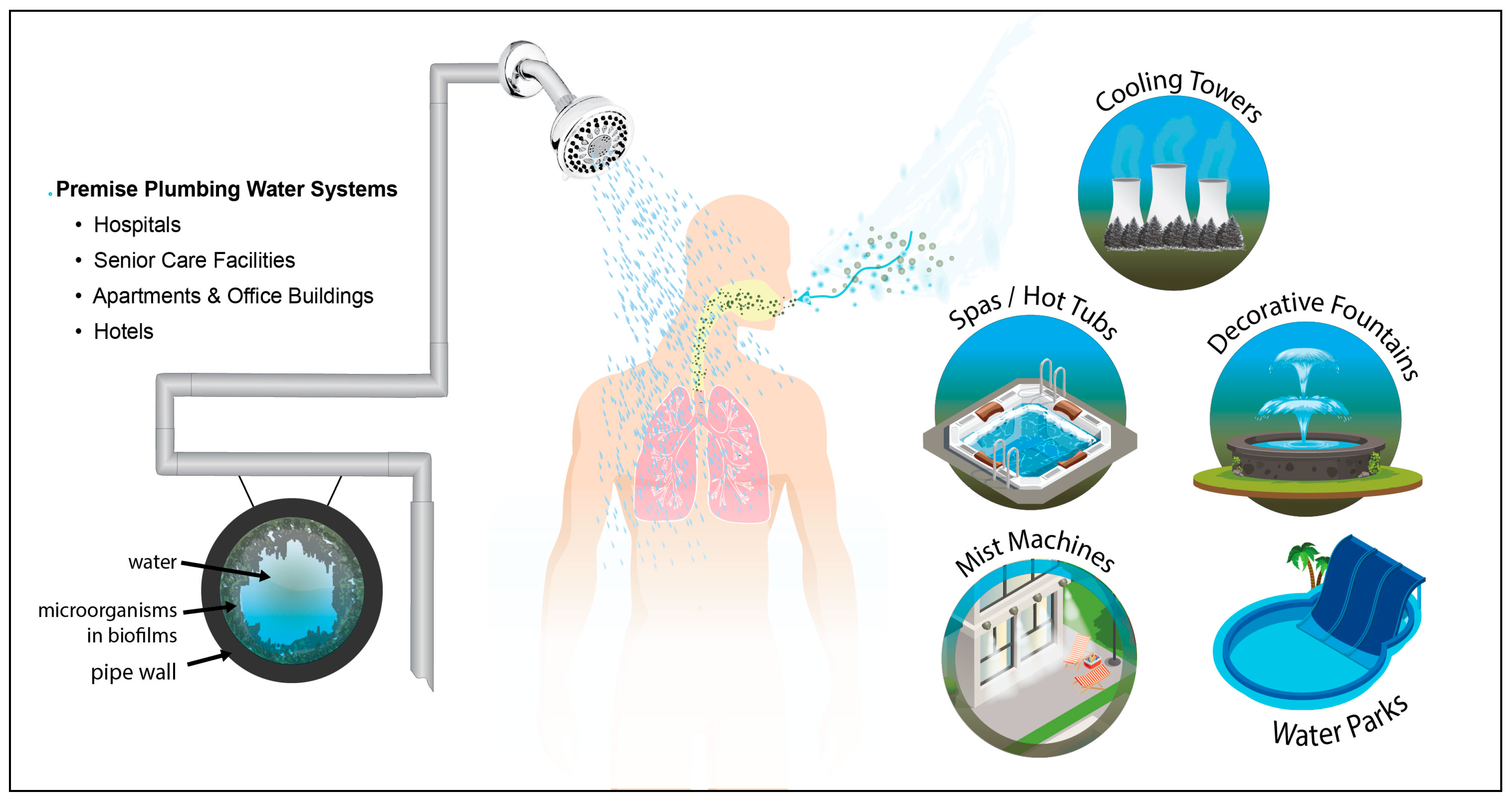
First Things First: Why Survival Stats Matter
Ever notice how some news stories make diseases sound terrifying… yet gloss over how many people actually get better? It’s easy to feel anxious—especially when the words “pneumonia” and “outbreak” pop up in the same breath. Legionnaires’ disease can be scary, yeah. But today, I want to talk candidly about the legionnaires disease survival rate, why your risk isn’t always what you think, and how a few simple moves at home can keep you and your family way safer.
Let’s get this out in the open: for most healthy people, the odds are solidly in your favor. And for those in the higher-risk clubs—over 50, smokers, or dealing with a weak immune system—I’ve got your back with practical tips and honest perspective. Grab a mug of something warm, and let’s talk through all the things that matter (and the ones that don’t).
Why the Numbers Look So Different
I still remember when a close friend called me in a panic—her dad was in the hospital, hit with pneumonia after a summer trip. They tossed around words like “Legionella” and “outbreak,” and suddenly, she felt swamped with scary stats. “Is he going to make it?” she asked. (Spoiler: He did, but not everyone is that lucky.)
So… why is the legionnaires disease survival rate so all over the place? Blame it on a cocktail of factors: age, health, and whether you get help fast. Seriously, location and timing can flip the script.
| Group | Fatality Rate | Note |
|---|---|---|
| General Population | ~10% | Typical cases with treatment |
| Over 50 / Chronic Illness | 15–25% | Higher risk group |
| Hospital or ICU-Acquired | 25–50% | Weaker immune systems, severe cases |
| Untreated, Immunosuppressed | 40–80% | Highest risk, no antibiotics |
Makes you pause, right? According to research on global trends, the average mortality for legionnaires hovers around 10%, but certain clusters and hospital outbreaks see even worse outcomes (worldwide health data). Most of the time, folks bounce back—especially if they’re otherwise healthy, don’t smoke, and get medical treatment quickly. If you’ve ever wondered if the legionnaires disease survival rate should scare you, know this: Knowledge, not panic, is your best protection.
It Sneaks Up Fast
Think pneumonia is something you can’t miss? Not always… Legionnaires’ disease is sneaky. It starts out feeling like the worst cold ever and then, before you know it, ramps up with cough, fever, chills, confusion—sometimes even muscle aches and diarrhea. The cough can be dry at first. In a lot of people, it turns quickly to trouble breathing.
Have you ever felt a random flu, only to realize, “Hmm, this is different?” That’s why so many stories go: “I thought it was a regular cold until I was struggling to climb the stairs.” If you’re at higher risk—over 50, smoker, or have lung disease—even a mild fever and cough should make you a little suspicious. Don’t tough it out; see your doctor.
The real kicker? Early treatment changes everything. Antibiotics are super effective when you get started quickly (CDC info on early treatment). The sooner you get checked out, the less likely things head south. Seriously—wait too long, and that survival rate can dip in scary ways.
Tiny Risks, Big Bounce-Backs
I chatted once with a 66-year-old garden club friend—let’s call her Gloria. She came down with a fever after potting plants for the community sale. Turns out, Legionella isn’t just in big hotel air systems; it can hang out in damp potting soil, too (who knew?!). Gloria pushed her doc for a test, started antibiotics right away, and was back pulling weeds within a month.
That’s the thing: for every horror story, you’ll find folks who recovered and got on with life. Even in the 2025 NYC outbreak, the local health department said that, while there were deaths, most people even over 65 pulled through thanks to quick treatment (NYC outbreak data).
The difference? Early action, support, and sometimes just a sprinkle of advocate-for-yourself energy.
What Tugs the Odds Down
Wondering who’s really in danger? A few groups carry more risk (not to be a downer, but it helps to know):
- People over 50 years old
- Current or former smokers
- Anyone with chronic lung disease (like COPD) or weak immune systems
- Patients in hospitals or nursing homes (sometimes the building’s water system is the culprit!)
Real talk: if you’re healthy and under 50, your odds are seriously good. If you or someone you care about is in a higher-risk group—be extra cautious about symptoms, and don’t hesitate to bring up Legionnaires if pneumonia hits.
And if you ever find yourself in a hospital (especially after surgery, or dealing with cancer, diabetes, or kidney disease), know that survival rates can dip much lower (25–50% or even as high as 80% if untreated and immune-suppressed) according to WHO stats (WHO legionellosis fact sheet).
What Makes Survival Go Up?
I know, we’ve been on the heavy side… Let’s talk hope. What actually boosts the chances of beating Legionnaires’ disease? Turns out, the answers are (mostly) simple.
Fast Antibiotics
This can’t be stressed enough: The entire survival story changes with early intervention. Once doctors suspect Legionnaires, they’ll start targeted antibiotics—macrolides or quinolones are most common (overview of effective antibiotics). Almost everyone needs some hospital care, but if you catch it before it becomes severe pneumonia, you’re in much, much better shape.
Getting the Right Diagnosis (Don’t Be Shy!)
The tricky bit? Legionnaires can look like regular pneumonia or even a bad flu. If you’re over 50, have chronic illness, or just got back from travel or a hospital stay and you’re feeling off—say something! Ask if your pneumonia could be Legionella. There are rapid urine tests and other diagnostics now that help catch the sneaky cases fast.
Small PSA: Doctors are human, too. The more details you give (“I was in this old hotel pool…”, “I just changed my home’s water heater…”, or even “I gardened with weird new soil”), the faster they put the puzzle together.
Supportive Hospital Care
Most people land in the hospital. It’s not fun, but with good fluids, oxygen, and close watch, recovery rates jump. The worst cases go to ICU, but even there, up to half still pull through with aggressive support.
No Waiting Around
Sometimes, people hesitate—waiting a few days for that cough to pass. Those lost days are what make the legionnaires disease survival rate worse. Listen to your body. (Would you sit around with a tooth falling out?!… Okay, don’t answer that.)
Your Home: Where Prevention Wins
Here’s the uplifting part: Most Legionella exposures can be avoided with really basic habits. You don’t need to live in a bubble. You also don’t need an engineering degree or expensive gadgets.
For example, when I moved into my current apartment, my dad practically forced me (okay, actually forced me) to run all the hot and cold taps for several minutes before the first use. Turns out, he was right—Legionella loves stagnant, lukewarm water. The CDC and other public health groups have pages on How to prevent Legionnaires’ disease in the home that are actually really practical.
- Make sure your hot water stays above 50°C (122°F) and cold under 20°C (68°F).
- Clean showerheads and faucet aerators regularly (soak in vinegar, done!).
- If you travel or your home’s been unused, flush all pipes for a few minutes before showering.
- Keep hot tubs clean and well-maintained (sorry, party people).
If you want a single, sanity-saving checklist, check out How to prevent Legionnaires’ disease in the home—no shame in printing it out for the utility closet.
Everyday Habits (Because None of Us Are Perfect)
You’re not alone if you sometimes forget to scrub the showerhead…or let that garden hose sit for weeks. I’m a pro at “I’ll get to it later.” But here’s the deal: a little bit of hygiene can go such a long way.
If you find a weird film on your faucet or a musty smell in your kitchen, that’s Legionella’s dream zone. Give it a scrub, run the water hot, and you’re already lowering risk. Seriously, sometimes prevention is about doing the small, slightly annoying chores we all want to avoid. Think of it like oral hygiene for your pipes!
If you want to geek out on stats and specific steps, here’s what you need: legionnaires disease survival rate— crunch the numbers, then come back and tell me if you find a better “excuse” to finally tackle that guest bathroom.
Bringing It Home: Take Heart and Take Action
So—deep breath. The legionnaires disease survival rate is actually pretty darn reassuring for most of us, especially with the medical care we have now. It’s the “hidden” cases, delayed hospital trips, or at-risk folks in nursing homes who need that extra attention. If you or your loved ones fall into a higher-risk group, be extra vigilant, but don’t panic.
Remember: symptoms start mild, treatment works wonders (especially when fast), and small changes to your routine can block Legionella from getting comfy in your home. Bookmark the guides on How to prevent Legionnaires’ disease in the home so they’re always a click away.
What will you do differently this week? Maybe run your tap a little longer, or nudge your friend who just got back from a cruise to see the doc if they’re coughing. Or maybe you’ll just feel a bit more relaxed now you know the odds. If you learned something or have a story, drop it below! The best thing we can all do is keep sharing, keep learning… and yes, keep taking those deep, grateful breaths. You got this.


















Leave a Reply
You must be logged in to post a comment.